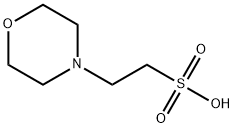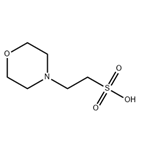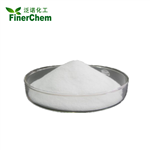4-Morpholineethanesulfonic acid (MES) is one of the good′s buffers, and the most extensively application is biological buffers. MES is a zwitterionic N-substituted aminosulfonic acid with a morpholinic ring and it does not form complexes with the majority of the metals used in environmental and biological studies. It is easily soluble in water and has minimum lipid solubility, making it impermeable to membranes. MES has been also used as a component of the elution buffer used to elute plasma from α2-macroglobulin affinity column. It has been used as an activation buffer during antibody conjugation to microparticles and it has been used in the functionalization of microchannels during the creation of microfluidic-integrated surface plasmon resonance (SPR) platform for pathogen detection.
White/clear crystalline powder
MES solution has been used to activate microspheres. It has also been used as a component of activating solution to activate carboxyl groups of poly lactic-co-glycolic acid (PLGA).
ChEBI: 2-(N-morpholino)ethanesulfonic acid is a Good's buffer substance, pKa = 6.15 at 20 ℃. It is an organosulfonic acid and a MES. It is a conjugate acid of a 2-(N-morpholino)ethanesulfonate. It is a tautomer of a 2-(N-morpholiniumyl)ethanesulfonate.
MES is one of the Good′s buffers, the most extensively used biological buffers. MES is a zwitterionic N-substituted aminosulfonic acid with a morpholinic ring. It does not form complexes with majority of the metals used in environmental and biological studies. It is easily soluble in water and has minimum lipid solubility, making it impermeable to membranes.
Flammability and Explosibility
Not classified
Crystallise MES from hot EtOH containing a little water. The picrate crystallises from EtOH and has m 178.8-182o. [Malkiel & Mason J Org Chem 8 199 1943, Beilstein 27 III/IV 370.]



